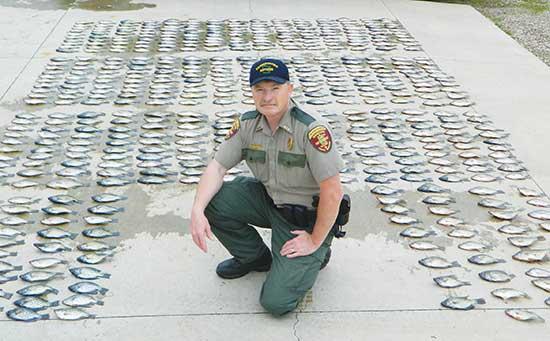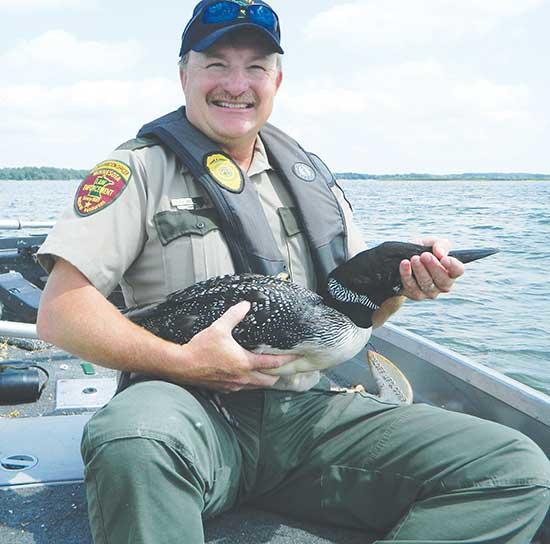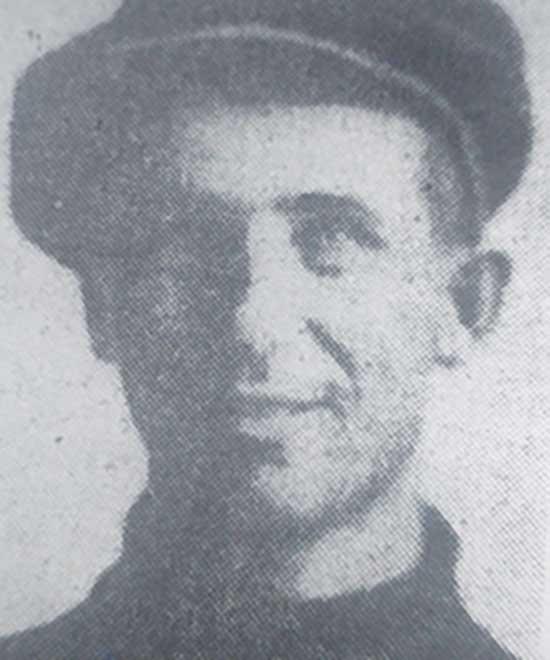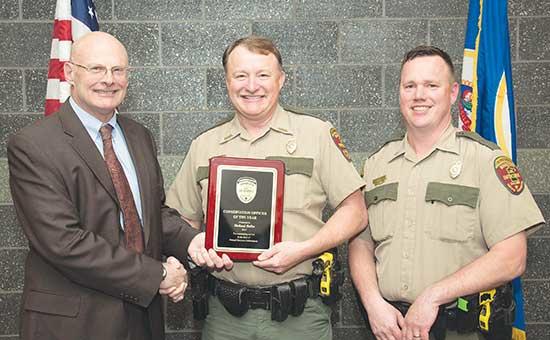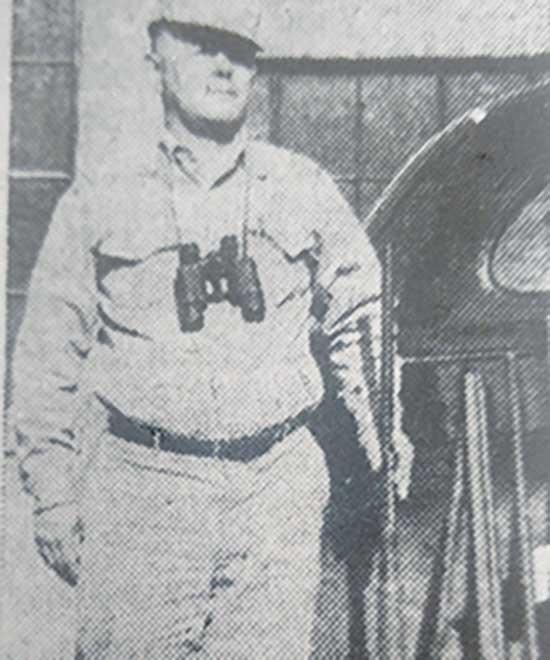‘Where Water Reflects the Sky’
On May 11, 1858, the territory of Minnesota officially became a state. It is one of 28 states whose name is derived from Native American origins.
“Mni” is the Dakota word for water, while ‘Sota’ has been known to have varying interpretations, depending on who you ask, according to WCCO. Meaning both “cloudy” and “blue-tinted,” both serve as relevant and descriptions of our grand land. In the Treaty of 1851, the direct translation of both Dakota terms is, “land where the water reflects the sky.”
And, with a motto the likes of “Land of Ten Thousand Lakes,” the term seems quite fitting.
For years, Minnesota has been a water-sport destination. People travel from all over the country to fish our shores and marvel at our abundance of nature. That in mind, it’s important to keep preservation and conservation at the forefront of our choices and lifestyles, as we call this great place our home.
For some, conservation efforts are just that, an “effort.” For others, however, it is a bit more disciplined.
Rick Reller
For 21 years, Rick Reller has devoted his career to the conservation of Minnesota. Originally from Hastings, Reller has been working in Wright County for the majority of his career as a Conservation Officer; now living near Annandale. After growing up with a love for the outdoors, working in the preservation of Natural Resources seemed like the logical step for his life.
“I grew up loving the outdoors,” Reller shared, “I hunted, fished, trapped, everything. I was always fascinated with being outside, so Biology and a career being outside was the goal.”
Reller obtained a Biology degree and would later return to the classroom to receive an education with law enforcement. He began his career working for what is now Three Rivers Park District as a licensed peace officer for ten years, before he was hired through the state of Minnesota as a Conservation Officer.
There are three “stations” in Wright County where officers report to – Big Lake, Buffalo, and Annandale. While officers may put in for work anywhere around the state to assist other stations, Reller’s primary area of focus for his work is the Buffalo station; serving at the western boundary of C.R. 8, north I-94, parts of the Hennepin County line, and the southern county line border with Carver County.
What many people don’t know regarding Reller’s work is that he is employed by the state of Minnesota, through a division of both the DNR and Law Enforcement. He first has an education in general Law Enforcement, and is specially certified in Natural Resources, which requires more education and training in Little Falls, near Camp Ripley. While he has the same duties and authority as regular state officers, much like those who you might see ticketing on interstates and assisting on scene at accidents, those areas of law enforcement are not his primary focus.
“Many Conservation Officers come from strictly law enforcement backgrounds,” Reller explained. “We see a lot of people hired that come from police forces, trooper backgrounds and the like, simply because we all have the same education requirements.”
Since 1887, Minnesota has employed officers that strictly enforce laws pertaining to wildlife and natural resources. That’s what the badge says. However, while the program has seen a lot of changes over the years in areas of authority and enforcement of new laws and protections, the overall idea has been the same: preserve Minnesota’s resources, before it’s too late.
Previously known as “Game Wardens” in the 1940s, the idea behind the job mostly focused on wildlife and game conservation. In a time when not many laws and protections were established in society, the name seemed fitting – wardens patrolled areas high in both recreational and non hunting of game, all without arms or weaponry.
It was quite a different job in the early years. Reller shared that an incident in the 1940s regarding fishing licensure changed the job drastically – three wardens were killed near Lake Sakatah in Waterville: Whipps, Holt, and Brady. Marked as one of the darkest days in Minnesota Law Enforcement history, the event would kickstart changes in the division of Natural Resources law, just 10 months after the tragedy. As a result of the incident, wardens were issued uniforms, and weapons. The story can be found in the online archives of the Star Tribune, dated July 17, 2010.
Needless to say, times are quite different these days. Long gone are the days of simply focusing efforts on wildlife. While still a large duty of the job, the division handles a myriad of other areas pertaining to Minnesota’s resources. The division handles areas like timber theft, shoreline and wetland preservation, forestry, water quality, ATVs, snowmobiles, boat and water – and that’s just a sampling right off Reller’s cuff.
Wright County conservation
The majority of Reller’s career has been focused in Wright County. The biggest and busiest area of his job pertains to fishing and hunting, with fishing demanding what he estimates is the most manpower of the year. With so many lakes in one area, it’s easy to see why.
Wright County also has unique resources for our area, as well, Reller shared. Wright contains Pelican Lake, which is the largest source for water-fowl hunting in the state. That said, the Buffalo station spends a lot of time on the water, enforcing laws pertaining to bird hunting and the like. Another interesting fact Reller mentioned was that Monticello currently houses the largest population of Trumpeter Swans in the country, which never used to be. Reintroduced in the area in the 1950s, the birds used to be endangered, generally, and were very rare in Minnesota, much less our area.
“People talk about so many protections and laws,” Reller commented. “While we wish there were less, these laws stem from people. People do things that prompt protections that need enforced, and that is a shame, but it is also a reality. Without those laws and protections, we certainly would have a very different ecosystem, as well as a very different Minnesota.”
Protections have varying effects, not all due to a failure to comply, Reller shared. Many things stem from environmental factors. For instance, moose populations up north are low, probably due to environmental factors, Reller hypothesizes. Water fowl populations, in general, are down. But, when you look at bald eagle populations, the U.S. hasn’t seen higher occurrences in a long time.
“These laws and protections work,” Reller said. “But, sometimes, other issues, factored in with protections, aren’t always so smooth. Natural Resources are really ever-changing, so there are many things, coupled with our presence as people, that contribute to issues in the environment. It’s really a matter of prevention; we want to be proactive instead of reactive.”
County concerns
Then there’s the issue with Aquatic Invasive Species (AIS). Wright County is spearheading its own program to deal with the issue at a county level, instituting its own ordinances. The authority at a county level muddies the water a little for Reller and his division’s jurisdiction; they cannot ticket and cite the county ordinance, though AIS protocol at a state level still is something they enforce.
If Reller had to put a finger on it, the two biggest issues for his division pertain to AIS prevention, and chronic wasting disease (CWD). Highlighted in recent years, the disease has always been on the DNR’s radar. It stemmed from Wisconsin, who encountered the issue late. While Wisconsin’s approach has, unfortunately, been more reactionary, Minnesota is working hard to be proactive in this area.
“We started finding this [CWD] in domestic cases [of deer],” Reller explained. “It’s prompted the state to issue a feeding ban.”
The ban is currently still in effect, and is for good reason – should a diseased animal feed out of the same bin as a healthy one, CWD would be communicative, and other animals would become diseased too. Thankfully, Reller confirmed that so far, there have been no confirmed cases of CWD in the Buffalo station.
Reller shared that the overarching issue they see each year as officers is lack of licensure; it’s still the number one ticketed offense in his office. As for issues that Reller takes personally, he shared that he was most aggravated by litter and wanton waste, otherwise known as intentionally wasting negligently, or inappropriately.
“We really take our job with a regulatory approach,” Reller said. “We are a regulatory authority. We want to educate and help. There’s a lot of misconception about what we do, but it is an office that is needed on a national level, and I am honored I get to serve this way.”
The upcoming season
As ice fishing season concludes, Reller shared that the Buffalo station has started moving to prepare for the season of open-water fishing, which is the office’s busiest season in the area.
DNR representatives, as well as Conservation Officers, would like to issue the announcement to take precautions anywhere near open water, and to follow water-safety laws and regulations. Make sure all swimmers, non-swimmers, and children are properly outfitted with lifejackets that fit well, and pick up a fishing regulation booklet.
For more information on Minnesota Conservation Officers, please visit: https://www.dnr.state.mn.us.
